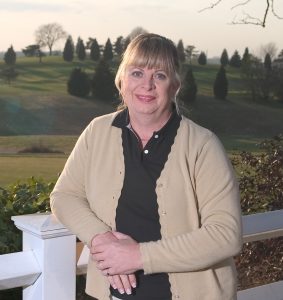
Mary’s Bio
Mary Armstrong is a multi-talented individual whose life journey has taken her around the world and careers in landscape architecture and golf course design. Early in her career, she was honored to plan the nation’s first National Environmental Center in Philadelphia. In 1990 she established her own golf design firm and in 2014, was recognized by Green Planet Architects for her environmentally sensitive golf course design. She was also recognized by a leading golf magazine as one of the world’s top female golf architects. Late in the first decade of this century, Mary recognized a decline in the golf industry due to overbuilding in the previous several decades. This resulted in some idle time, allowing her to rekindle her passion for writing from her teenage years. The many years of writing technical documents required a transition in style.
Mary’s journey into a more creative writing style began with a weekly golf column for the Las Cruces Sun-News in 2010. This opportunity allowed her to tap into her creative side and share her deep expertise in the world of golf with a broader audience. It marked a pivotal moment in her transition from a career in design to a flourishing pursuit of creative writing and earned her a devoted following.
Her love for reading and literary influences played a significant role in shaping her interests and passions. Authors like Michael McGarrity, Ken Follett, Diana Gabaldon, Sara Donati, and Jean M. Auel inspired her storytelling aspirations.
Mary’s move to Las Cruces in 2010 ignited her curiosity about the region’s rich history, particularly the unsolved murders of Colonel Albert J. Fountain and his young son, Henry. Her dedication to historical accuracy and storytelling led her to delve deeply into this subject, consuming any available information and seeking to understand the historical events surrounding this tragic incident. Mary believes the history of a place reveals its essence.
Her immersion in the history of Las Cruces and the Fountain murders became the foundation of her creative journey into writing and storytelling. The first notable outcome of this exploration was the creation of a play titled “It is Blood,” which delved into the historical events surrounding the murders, aiming to capture the essence of the time and place in which they occurred. This play was recognized when it was selected for performance at the Las Cruces Community Theater’s One-Act Festival in 2017. This event seemed to signal that Mary had found her niche in storytelling, historical research, and creative expression.
Mary’s approach to the murders differed from many other authors, as she was more interested in understanding the circumstances that led to the tragic event rather than attempting to solve the murders themselves. This deepened her desire to write about the event, culminating in her award-winning debut novel, “The Mesilla,” the first in a five-book series covering the ten years leading to the Fountain murders.
Through her novels, Mary sought to bring to life the historical backdrop, characters, and tensions that led to the unforgettable events of February 1, 1896. Her commitment to historical accuracy and storytelling resulted in gripping and immersive narratives that shed light on the complex dynamics of the time, while revealing the similarity of those days to our current political climate.
Mary’s The Two Valleys Saga is an ambitious five-volume project that places the Fountain murders within a broader historical context. Her goal is not just to recount the events themselves but to delve deep into the underlying reasons and historical characters behind the conflicts involving Colonel Albert J. Fountain, the residents of the Tularosa Basin, and Albert Fall. She draws upon scholarly research and period newspapers to provide an authentic feel for the era and the events that unfolded. It took her many years to decide on the best approach to convey this story. In 2020, she decided that a fictional nephew, unacquainted with the Colonel, was the best vessel to share a relatively impartial observation of all that leads to that fateful day. This fictional character ‘reads law’ with the Colonel and becomes involved with all the other major historical figures.
Through her writing, Mary explores complex themes such as tribalism and the human condition. She delves into the motivations, rivalries, and cultural dynamics that shaped these historical events. She also demonstrates how the consequences of these events continue to reverberate through the relationships between the two valleys in the present day.
Mary’s work serves as a valuable resource for those interested in understanding the rich history of the region. By shedding light on enduring tensions and complexities, she provides readers with deep insights into the past and how it continues to influence the present. Her dedication to preserving and sharing the history of Las Cruces and the Fountain murders enriches the cultural and historical landscape of the region.
In summary, Mary Armstrong’s life journey is a testament to her versatility and passion for storytelling and historical preservation. From a successful design career to a flourishing writing career, she has made significant contributions to the cultural and historical heritage of Las Cruces, New Mexico, and indeed, to the world.
Mary lives in Las Cruces, New Mexico with her husband Skip Bailey and their dog-child, Java.
“There is no Frigate like a Book To take us Lands away.”
-Emily Dickinson
Click here to get your signed copy of the above books via Paypal or Credit Card
